

Fog rolls in during a hike on the Faroese island of Kalsoy © Sebastian Modak / Lonely Planet
On a sailing and hiking expedition in the remote Faroe Islands, Sebastian Modak finds a place where the lines between myth and history – and beauty and brutality – are undefined.
I woke up to the odd sensation of a cold, wet finger prodding the flesh of my bare arm. The wooden ribs of the ship creaked as I felt myself swaying from side to side in my bunk.
“Quick! Wake up and come up on deck,” a voice insisted, as the finger slipped through a gap in the bunk’s curtain and poked me again. “The sun’s out.”
I was learning two things. The first was how quickly personal boundaries and norms around privacy fall away when you are traveling in close proximity to strangers. The second was how rare the sun is in the Faroe Islands.
I rolled out of my bunk and stumbled up the narrow staircase to the deck of the schooner and squinted against the sun for my first cloud-free view of the Faroe Islands in nearly a week.

Storm petrels chased each other in loping figure-eights over silver patches of sunlight. Puffins, their tiny wings flapping in manic blurs, swarmed the highest rocky pinnacles like bees around a hive. The towering cliffs that had been a constant moody, muted backdrop now glowed a hundred greens. Just as the engine cut and the sails were unfurled, someone, moved to provide a soundtrack to the magic of the moment, started playing sea shanties on a Bluetooth speaker.
By this point, I had hiked up steep, slippery inclines in sideways rain, unable to see more than a few feet into the suffocating fog. Green with seasickness, I had watched from my coffin-like bunk as a dense forest of wet hiking clothes swayed with every movement. I had been so cold on one hike, that I had needed to use one hand to pry the rigid fingers of my other off of my trekking poles. And now this: sunshine.

Everywhere I went in the Faroe Islands, I had encountered stories, the kind intertwined with fantasy, myth and legend: a town visited by trolls on the twelfth night of Christmas; land formations named after giants and witches; a monster that took on the form of a beautiful horse in order to lure victims – especially children – into the murky depths of a giant lake.
This was a place shaped by stories and with three days left in my trip, I felt like I had already had the perfect, wrap-it-in-a-bow ending to this one. Yes, this was the happy ending an adventure like this deserved.
Adrift in the North Atlantic
To arrive at an ending though, there has to first be a beginning. And, if an anecdotal survey of my peers is anything to go by, the best place to start may very well be “um, where?”

Draw intersecting lines from Iceland, the northern tip of Scotland and the southwestern coast of Norway: where the lines meet is about where you’ll want to start looking. Now imagine a mostly treeless, grassy land floating in that tumultuous stretch of ocean. Take a mythically large hammer and start smashing the land to bits, leaving behind a broken puzzle of jagged cliffs, plummeting waterfalls and scooped-out sea grottoes. That’s the Faroe Islands, a collection of 18 islands and more than 750 islets, home to around 50,000 people, 70,000 sheep and a few million seabirds.
It’s technically a semi-autonomous constituent of the Kingdom of Denmark, but when the Faroese say “we” or “us,” they’re talking about the Faroese, not the Danes. Opinions differ when these islands were first settled and by whom, but most people agree it was probably sometime between 600 and 900 CE. Over the next thousand years, a tight-knit and thick-skinned society developed.
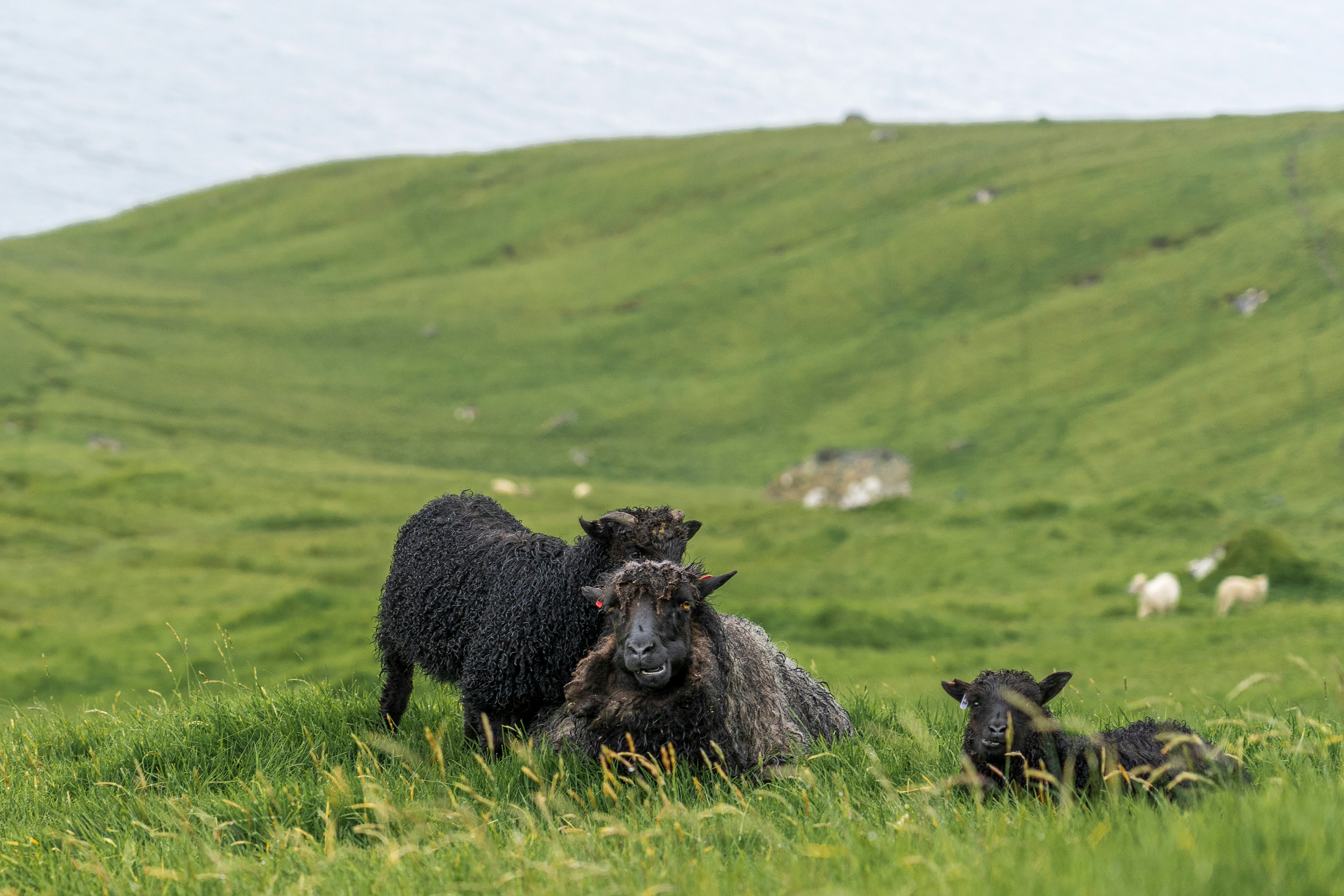
As one might expect from a group of rocky islands in the middle of the North Atlantic, this has not always been an easy place to live. While lamb and mutton are plentiful in a place that literally translates to Sheep Islands, the Faroese have long depended on the sea for survival. Massive quantities of salmon, whale and dolphin, the charismatic puffin, the sleek guillemot and a handful of other migratory seabirds: they’ve all at some point or another been on the menu.
The weather is a near constant dreariness that lends itself to time indoors, sharing stories. Even in the height of summer, when the sun is ostensibly supposed to be up for 19 hours a day, the skies can stay a menacing gray for weeks at a time. Tórshavn, the country’s charming capital, is one of the cloudiest cities in the world, seeing an average of just 870 hours of clear sunshine a year.
See the Faroe Islands digitally through the eyes of your own local avatar
By land and sea

I came to the Faroe Islands to join an expedition put on by Amarok Adventures, a small adventure tourism operation run by Albert Ojembarrena and Mónica Fuentes, a Spanish couple based in Iceland. While most of the roughly 140,000 annual visitors to the Faroe Islands explore the islands by cruise ship or rental car, Amarok’s itinerary promised a different vantage point. This would be a week of sailing and hiking, alternating between seeing the land from the sea, and the sea from the land.
“While the soul of some countries lies in the mountains or in the food, or in the culture, in the Faroe Islands, it lies in the ocean,” Fuentes said when I asked her what was special about seeing these lands from the deck of a sailing schooner.

Before boarding the sailing schooner, I was eased into the adventure with three nights on land, where our small group made a home base out of a collection of turf-roofed cottages in the town of Gásadalur (population: 11) on the western island of Vágar. A short walk from the cabins, a waterfall plunged into the sea. The sun barely set, but when it did – dipping just below the horizon right before midnight – the valley fell into a quiet I have seldom experienced. Late in the evening, standing outside, unable to sleep and trying not to wake up my roommates, my breath sounded as loud as thunder.
As we embarked on day hikes across Vágar, the Faroe Islands’ stories started to emerge. One afternoon, we followed a path known as the Old Postman’s Trail, a name that recalled a time before a tunnel was blasted through the rock, and mail carriers no longer had to trek over a mountain to share news. Earlier that day, we took a walk around Sørvágsvatn, the largest lake on Vágar. From certain angles along the trail, the lake seemed to hover above the ocean; from others it seemed they were one and the same, separated by a hair-thin sliver of land. There, I learned of the “Slave Cliff,” said to have been a natural execution platform for disobedient enslaved people brought to the islands by Norse settlers. Elderly and sick Norsemen were also thought to have used these cliffs as express lanes to Valhalla, the fabled hall waiting for Viking warriors in the afterlife.

It was becoming clear to me that the Faroes hold few stories like mine, of sunshine at the end of an arduous and cloudy journey. These are stories born out of harsh weather and empty stomachs.
Beauty and brutality
I clutched the railing of the ferry like my life depended on it (it did), as we bounced our way past massive stone arches and crumbling islets looking like the half-inundated ruins of some ancient civilization. We were traveling to Mykines, a speck of land just west of Vágar on the periphery of the archipelago. It was a taste of the seafaring that was to come in the latter half of the trip, but for now I was most excited about the birds.

Home to just 16 year-round human residents and a staggering number of birds, Mykines is an ornithologist's dream. The common guillemot, the northern gannet, the kittiwake, the northern fulmar, the oystercatcher and more all call this island home when they are not out to sea. But the main attraction is undoubtedly the Atlantic puffin, a palm-sized bird with a beak the color of Tang and eyes that look like the work of an overly enthusiastic make-up artist.
In Mykines’s main village, I met Oda Wilhelmsdóttir Andreasen, one of the island’s residents and the founder of Go Local, a tourism company that offers tours of Mykines as well as stays in her home in the village. We watched the ferry disappear around a rocky outcropping and we were off.

Andreasen led our group past sheep pastures towards the cliffs that look over the village. A brief respite of sunshine gave way to rolling fog. Scraps of soggy sheep wool hung from fences; the cackling of an aviary’s worth of seabirds cut through the sound of wet boots on wet grass. And then we saw them, first as solitary stragglers on the edge of the colony, then pairs, then a whirling, whizzing cyclone of them. Puffins, in every direction.
It was one of the many moments I’d have on land and at sea in the Faroe Islands, where I had to grapple with the competing sentiments of awe and horror. Puffins are beloved animals in the Faroes – you hear people talk about them with an affection we humans generally reserve for cuddly mammals. They’ve also traditionally been a major part of the Faroese diet, killed in large numbers every year. (There are now restrictions on puffin hunting, due in part to declining populations from climate change.)

The Faroe Islands is a place where magic and misery, celebration and death often exist side by side. Traditionally, every January, the women of Mykines wave handkerchiefs in the air to welcome back the huge nesting population of gannets, a large white seabird with whispers of yellow around its neck. Just a few months later, as autumn sets in, men gather for the gannet chick hunt. In the darkness of night, they rappel down the cliffs, releasing themselves from safety harnesses once they’ve found their footing. Then, using headlamps for illumination, they pick out around 500 chicks of the right age for the harvest. The birds are killed with a swift cut to the back of the neck and thrown into the sea below where a boat will take them to shore. The meat is shared equally among the hunters; nothing is wasted.
I felt deeply affected – repulsed even – by these stories of death, even as I admired a people’s commitment to self-sufficiency in an otherwise forbidding corner of the world. It is possible, as any traveler will know, to hold two competing ideas at once.

Back in town, as we waited for the return ferry to Vagar, I struck up a conversation with some 20-something men who had come to Mykines from Streymoy, the largest island in the Faroes, for a long weekend away. In no time, they had pulled out offerings of hospitality. They poured me two varieties of Faroese gin to try (one deliciously complex, the other throat-burningly collegiate). Someone brought out a leg of skerpikjøt, or fermented lamb, the flesh an enticing deep red and easy to slice like a Spanish ham. And then they brought out a tray of almost black slices of meat, a dash of rock salt covering them like sprinkles. This, they explained, was the biggest delicacy of all: a jerky made from the meat of the pilot whale.
If the Faroe Islands is a patchwork of stories told, retold and interpreted until they become new stories, there is one that has caught the world’s attention more than any other. It is that of the grindadráp, a local whaling tradition wherein pilot whales and white-sided dolphins are herded towards shore and then killed. The animals are dispatched quickly with a specially designed harpoon and the meat and blubber is divided among the community. In recent years, it’s an act that has been put under increasing scrutiny.
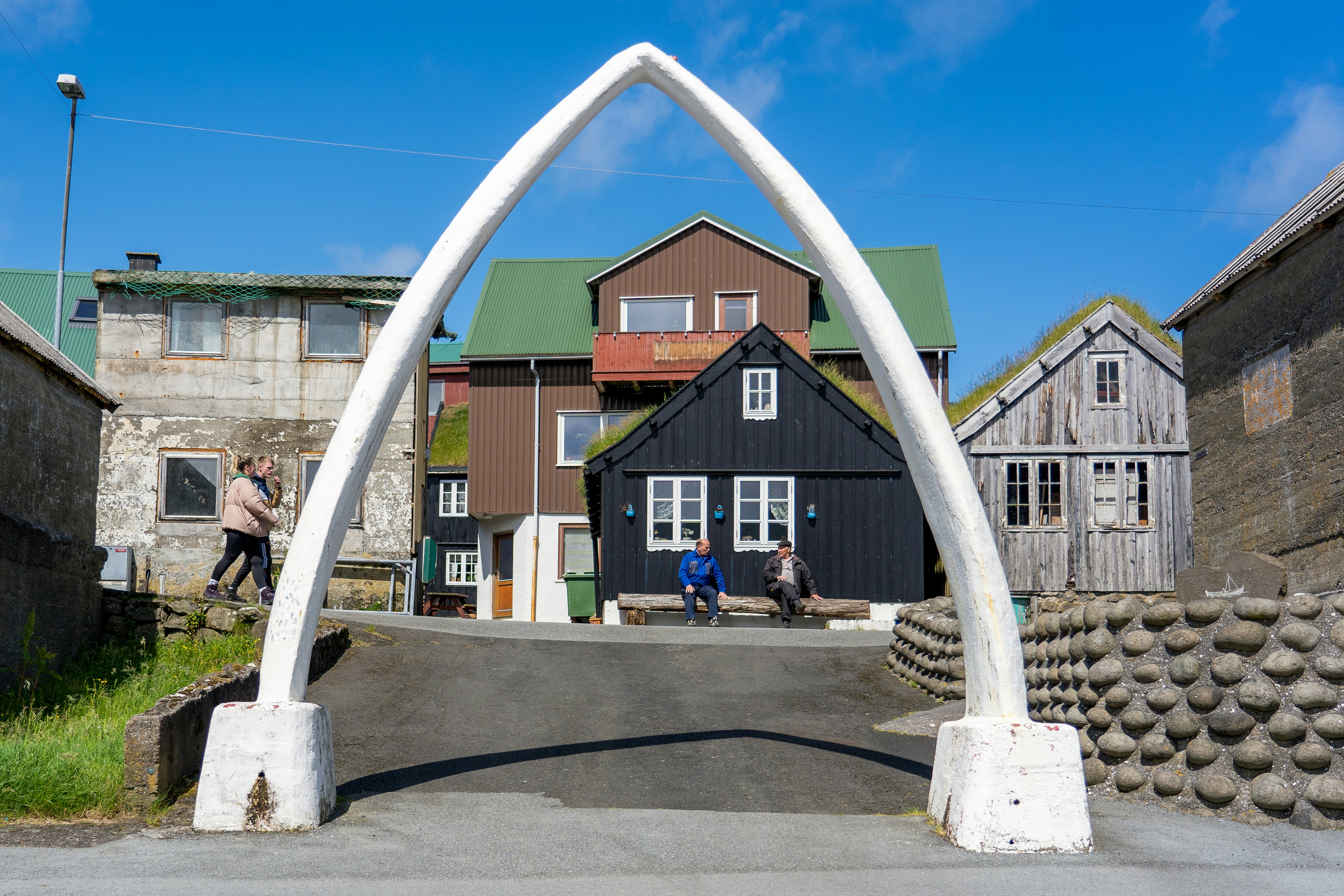
In photos in major global news outlets, Faroese men are seen wading through surf turned red with cetacean blood. The bodies of pilot whales and dolphins, deep incisions made at the top of their spinal cords, line the beaches. The outrage reached new levels in 2021 when the numbers coming out of the annual grindadráp were particularly shocking. Where most hunts usually involve hauls in the hundreds, in 2021, at least 1400 white-sided dolphins were killed. By comparison, in 2020’s hunt, the count was only 35.
Some say the hunters misestimated the size of the dolphin pod, others that they were inexperienced or got carried away. But almost everyone I spoke to thinks what happened in 2021 was a mistake, even if they defend the tradition in general. Other Faroese think the tradition should be stopped altogether, if not for the cruelty of the hunt then for the high levels of mercury and other industrial contaminants found in the meat. (In July 2022, the Faroese government announced a quota of 500 dolphins for this year’s hunt; detractors continue to insist the practice should be banned outright.)
For my part – a visitor from a place where our meat is made anonymous by Saran wrap and styrofoam – I felt my outrage at the brutality of the whale hunts tempered by my own ignorance. On the spectrum of cruelty, where does the grindadráp fall in comparison to industrial factory farms where cattle are hooked up to machines and food processing plants churn out hot dogs and chicken nuggets?
I picked out a small piece of the jerky and took a bite – a soft crunch of slight funk and hearty saltiness – and washed it down with a healthy pour of the good gin. I turned down an offer for a second helping but did accept another shot.
The Land of Maybe

Spend some time on the sea around the Faroe Islands and you’ll wonder how so many here spend so much of their lives navigating its temperamental waters. But there are those who love the way clouds roll in without warning like an angry herd of horses, love to watch the sea turn from sapphire to a sinister gray. They can reconfigure their internal gyroscopes so that they can climb masts and pace decks even as a ship lurches like a drunk. Fridtjof Sørensen Eidsvold, a 35-year-old sailor originally from Norway, is one of those people.
What brought him from the comparatively bountiful shores of Norway to this windswept outpost of Old Nordic culture and tradition? “I’ve always been fascinated by this place – it’s rough: the people are rough, the nature is rough,” he said. “It’s this barren rock in the middle of the ocean, yet the people thrive.”

Eidsvold was one of three crew members who welcomed us aboard the Norðlýsið, after our time spent on land. First built in 1945 as a shipping schooner, the Norðlýsið ("Northern Light," in Faroese) is extra special to him after he worked on restoring it to its current, gleaming form.
"The ship has history and tradition in every little detail," Eidsvold said. "We didn't want to change that when we restored it."
For the next four days, our close group – the sailors, our guides and the group of a dozen adventurers spanning ages and continents – got closer than ever. We commiserated when the swells and rain hit, rejoiced when they stopped. Each night, we gathered in the tiny common space under deck, swilling beers and eating meals miraculously prepared in a closet-sized kitchen. Any risk of missing a good night’s sleep because of the claustrophobia, the smell of wet hiking boots or the constant motion, was mitigated by just how tired our bones and muscles were at the end of each day.

The Faroe Islands is known as the “Land of Maybe,” because nothing is certain – and that included our plans. Each day was a surprise as we tried (with mixed results) to avoid the worst of the rain and wind. One day, we anchored at the very tip of the island of Kalsoy, using a public bus to make our way down its narrow length, stopping to hike to its famous lighthouse suspended at the lip of a giant, emerald-green bowl. On another, we skirted along the Vestmanna Sea Cliffs, monumental rock formations that rise out of the sea and disappear into thick shrouds of fog. We searched in vain for a place to land, but the swells were bucking with a ferocity that kept us aboard.
The biggest day, we had been told, would be the traversal of Slættaratindur, which at almost 3000ft is the tallest mountain in the Faroe Islands. We disembarked from the ship in the town of Eiði (population: 711) and began our hike. One of the many things about traveling in the Faroe Islands that immediately strikes outsiders as odd is how much of it feels both wild and tamed – another in a string of contradictions that defines the place. Even when we had left the town far behind, there were signs of humanity’s imprint. Docile sheep stared at us as we walked. We crossed makeshift bridges and passed through wire-and-wood gates built into fences.
This is private land, Fuentes and Ojembarrena explained to me. In fact, most of the Faroe Islands is. It was why, I realized, things like entrance fees, trail markers and informational signs seemed so arbitrarily distributed. Much of the Faroe Islands is owned by individual sheep farmers in the form of either outright land ownership or long-term leases from the government (so-called “King’s Land”).
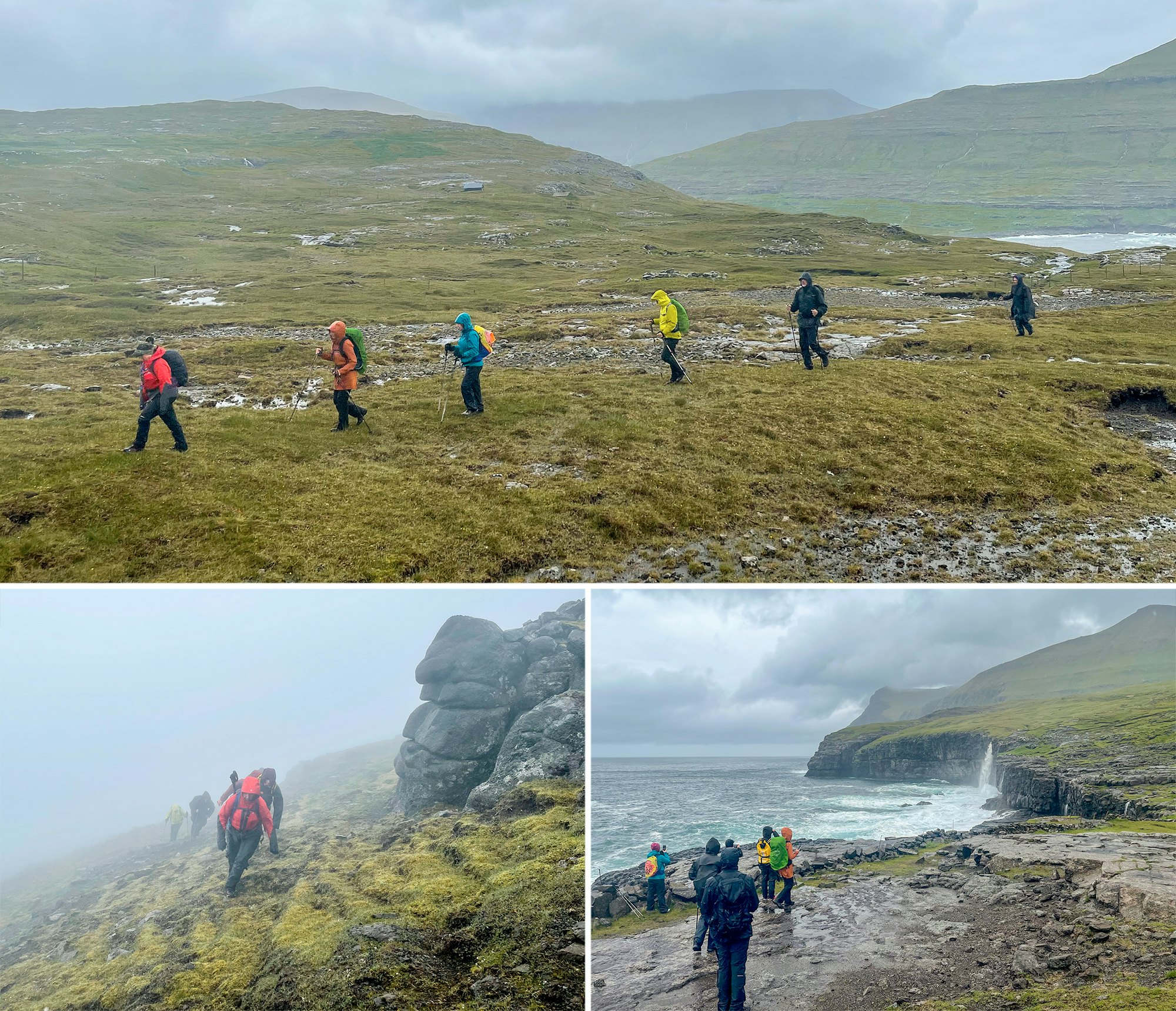
In the case of the Slættaratindur hike, it made guides all the more crucial. No signs or trail blazes pointed the way we should be going. Fuentes and Ojembarrena frequently consulted GPS devices to make sure we were on the right track. Orienting ourselves without the help of technology became all the more impossible as a blinding fog rolled in and rain started to pour. Getting to the top of Slættaratindur was always going to be a “maybe.” As we looked up and saw the mountain’s peak utterly obscured in dark gray clouds, the plan changed. We wouldn’t summit Slættaratindur as planned. We would take a less perilous, but still arduous, alternative path across the island to meet our ship.
Eight miles later – my feet numb in puddles of cold water collecting at the bottom of my boots, the skin on my face raw from wind and rain – we stumbled into the town of Funningur (population: 47) and climbed aboard the Norðlýsið. If I had come to the Faroe Islands in search of a challenge and a story, this was a success. This, too, could be the ending I was after – perhaps a more Faroese one, sodden and miserable as I peeled layers off and lined up for a hot shower. But there was still a little more to learn.
The tourism story
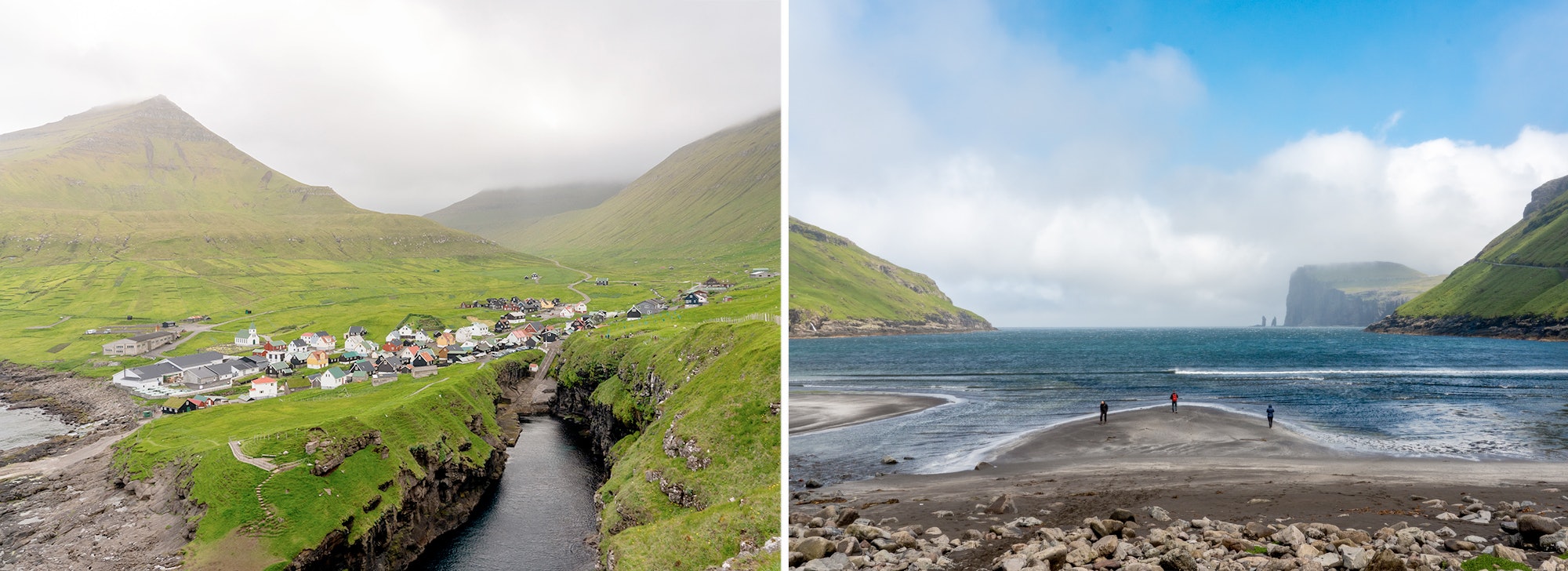
After the rainy hike and after the miraculously sunny morning, after metropolises of puffins and so many villages of turf-roof houses and eerily empty streets, I said goodbye to the group and set out on my own. For two more days, I explored other corners of the Faroe Islands, but this time by rental car. I took in heart-achingly charming villages like Gjógv with its gorge cutting through town like a deep scar, and Tjørnuvík with its black-sand beach, which I saw get hit by three successive rain storms over the course of an hour.
I collected more stories, just as the Faroese have for 1000 years. There was the man selling heart-shaped, homemade waffles out of his kitchen for 50 kroner a pop. There was the hiker I saw, cross-legged in the grass in the epic valley of Saksun. Her eyes were closed and she didn’t flinch when the rain started. She was still there when, just for a little while, it stopped again. There was the meal I had at ROKS, a sister restaurant to the world-famous Michelin-starred KOKS (temporarily closed as it takes the form of a pop-up in Greenland), a story in itself: one of pushing the limits of just how many ingredients could be pulled from the sea. There was all the emptiness and silence, too. Where in other parts of the world, a wandering tourist might expect to find souvenir shops and cafes hungry for currency, here there was nothing. This was a place where, as an outsider, it can feel like you need to tiptoe so as not to tip the balance.
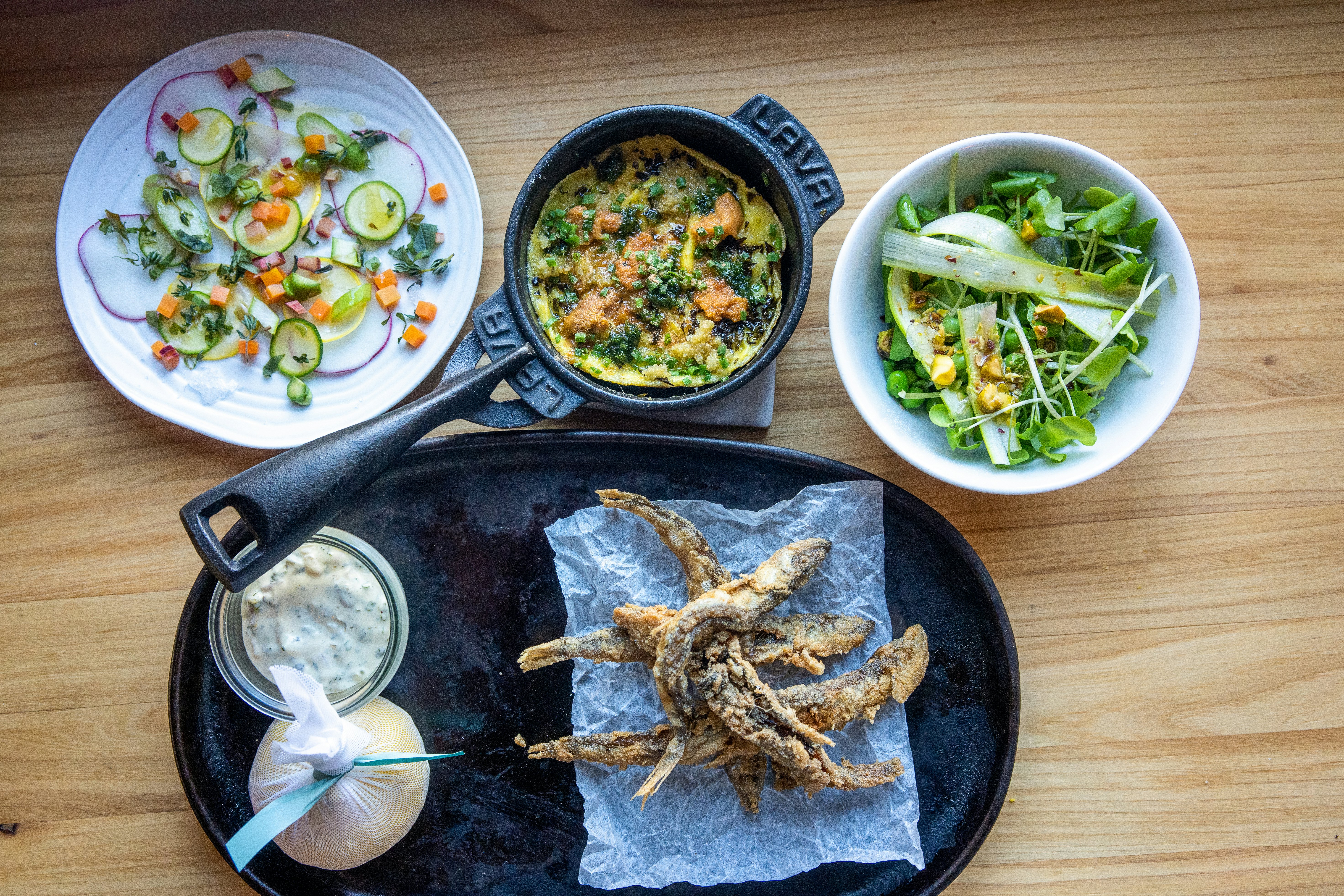
Change comes gradually everywhere, but in the Faroe Islands, it faces an extra blustery headwind. Catching up with Andreasen, the guide on Mykines, after I returned home for the Faroes, I asked her what her biggest concerns were as the story of the Faroes unfolds. Among them, predictably, was me. With rules and regulations around tourism largely in the hands of disparate landowners (mostly farmers who often double as politicians), it’s unclear how a place like the Faroes will deal with increasing tourist numbers.
Andreasen says that after the lull of the pandemic, she’s already seeing the number of visitors arriving in Mykines reaching unsustainable levels, with some even coming in the evening to take advantage of the sub-Arctic sun. A day doesn’t go by, she says when she doesn’t have to tell a tourist to step away from a puffin nest or a dangerous rockface.
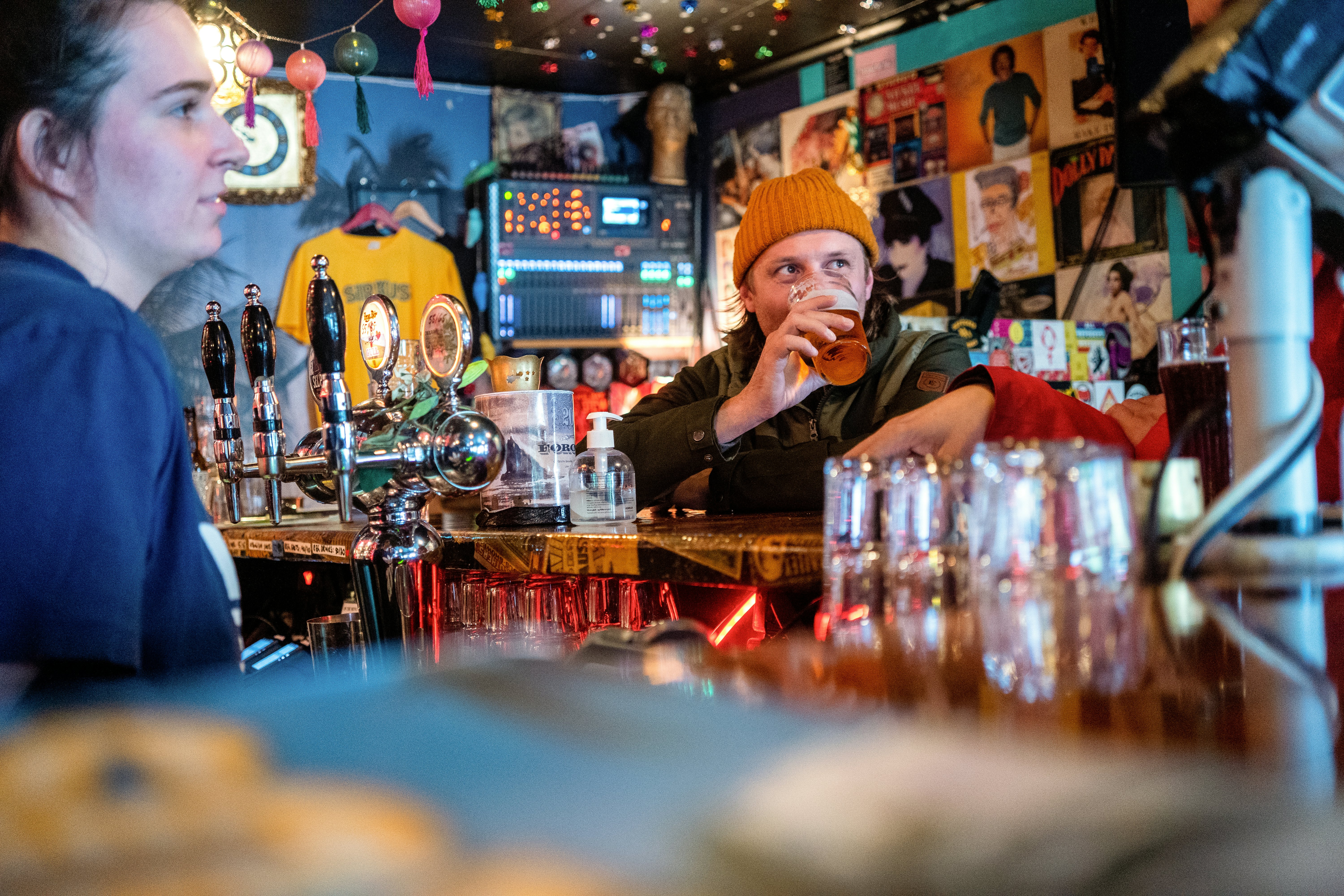
“You have around a dozen people living here and then 300 tourists come every day – it’s very stressful,” Andreasen said. “We tend to forget about social sustainability, the lives of the people that live here.”
Andreasen is calling for more rules and regulations around wildlife interaction and visitor numbers, something she says is extra difficult when some farmers just want to charge an entrance fee to their land and call it a day. Whether or not rules are implemented could decide whether Andreasen stays in her quiet haven of Mykines or starts a new chapter for herself.

“I want people to wake up and realize that tourism done right can be part of the economic future here,” Andreasen said. “But I want us to focus on a target group, the people who travel with their heart, for more than to just get a selfie to send to friends. I’m cautiously optimistic we can.”
It should hardly be a surprise that in the Land of Maybe, one of endless stories being told and retold until they resemble myth, the future remains uncertain, too.
Amarok Adventures, which also runs trekking trips in Iceland and Nepal, is currently offering two Faroe Islands hiking and sailing expeditions in June 2023.














